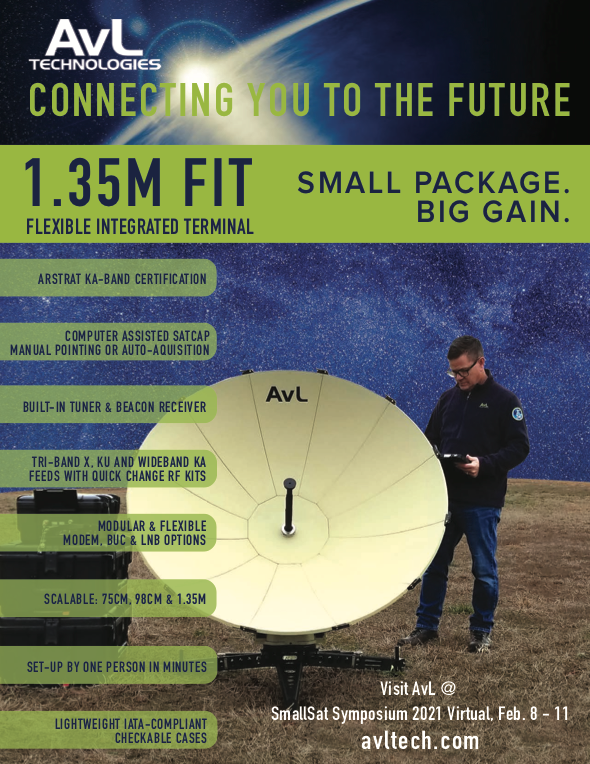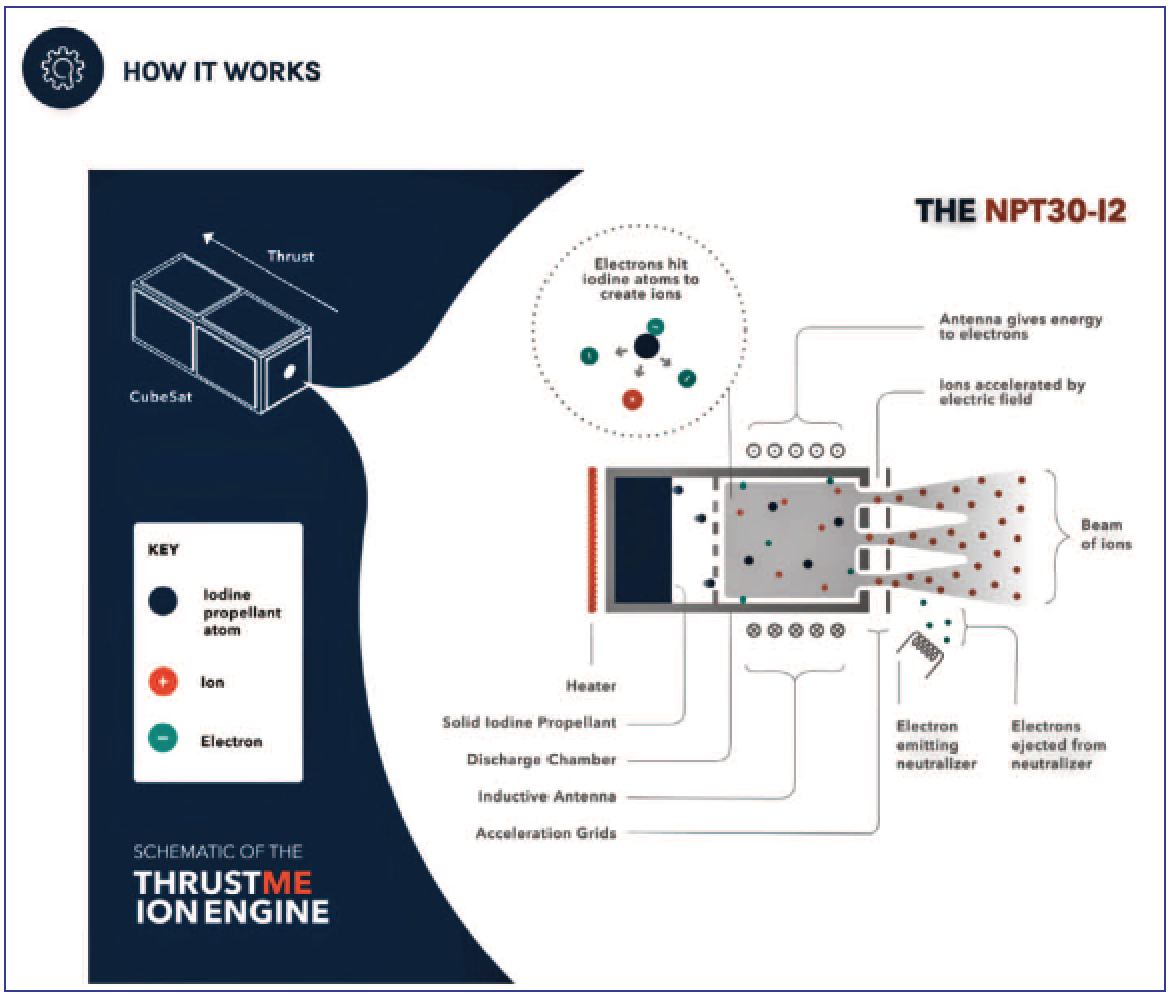Low-Earth Orbit (LEO) satellite constellations offer the promise of improved temporal refresh rates and global service coverage for communication and Earth-observation applications. With many current or future constellations consisting of hundreds or thousands of satellites, new innovative and cost-effective propulsion solutions are required to simplify and streamline the satellite integration process, and to ensure the economic viability of the industry. Iodine-fueled electric propulsion systems represent a new breakthrough technology to help meet this need.

In the last decade or so, the space industry has seen a rapid change toward a New Space paradigm. The increasing commercialization of space has been driven by the miniaturization and capability of modern electronics, and the wider availability of launch vehicle options providing easier access to space. This has allowed the formation of many new smaller companies developing satellite constellations for a wide range of applications as well as in many larger companies, such as SpaceX, Amazon, and OneWeb, proposing and developing ambitious, satellite mega-constellations to provide near-real-time broadband internet across the globe.
These mega-constellations are planned to consist of hundreds to tens of thousands of smallsats with a mass of hundreds of kg. The ability to manufacture and operate satellites of this size and number creates new challenges that require innovative solutions in many areas. One such area is in-space propulsion.
Many constellations consist of satellites that are launched together in large batches. In order to achieve required global coverage levels, these satellites must subsequently be deployed into specific constellation patterns. This deployment typically requires an onboard propulsion system, which is also needed for periodic orbit maintenance, maneuvers to avoid possible collisions with other satellites or space debris, and end-of-life disposal.
The New Space paradigm has seen a shift towards smaller satellites for which many currently available propulsion systems are no longer appropriate. They are often too large, too costly, and make use of propellants that are not compatible with launch vehicle ‘rideshare’ options. Such propellants may also introduce delivery and shipping problems, while increasing the complexity of the satellite integration process —- an important consideration when dealing with large constellation sizes. New, innovative propulsion systems are needed for this next generation of satellites, and iodine-fueled electric propulsion is an emerging technology that can help address these challenges.
Traditional Electric Propulsion Systems
Many traditional electric propulsion systems, such as gridded ion or Hall-effect thrusters, typically make use of the noble gas xenon as a propellant.
Xenon is particularly attractive as it is non-toxic, chemically inert, and leads to very high thruster performance and efficiency.
However, xenon is also extremely rare (about one part per 10 million in the atmosphere) and commercial production is expensive. Furthermore, many competing industries make use of xenon for a wide range of applications from general anesthetics in hospitals, to automobile lighting.
Estimates show that the space industry demand for xenon alone could exceed global production capacity by 2025, which will create strong price fluctuations and supply disruptions. Krypton has been identified as a possible alternative propellant (and is used ,for example, by SpaceX on their Starlink satellites), but this is viewed as only a short-term solution as many similar problems with xenon exist.
An additional disadvantage of xenon (and also krypton) is that it must be stored under very high-pressures (typically 100 to 200 times higher than atmospheric pressure), which requires carefully designed and tested propellant tanks. For many smallsats that are launched into space on a ‘rideshare’ basis (where they share a launch with a larger and more expensive satellite), such high-pressures represent an explosion risk that may be viewed as unacceptable, or require additional certification and insurance.
Such high-pressures also complicate propulsion system delivery and integration with a satellite, as propulsion systems may need to be shipped and delivered empty and subsequently fueled at customer facilities and/or launch sites: a process that can require interaction with a local propellant supplier, specialized high-pressure loading equipment and trained personnel. This increases the time and complexity of satellite assembly and integration, as well as the overall system cost: strong disadvantages for constellation satellites which must be manufactured, integrated, and tested on a tight schedule.
Iodine as an Alternative Propellant
Iodine represents an innovative new propellant choice for electric propulsion systems. Iodine has many similar properties to xenon, but is significantly less expensive and more abundant and is a solid at room temperature. This allows storage without the need for a pressurized propellant tank that decreases the overall size of the propulsion system.
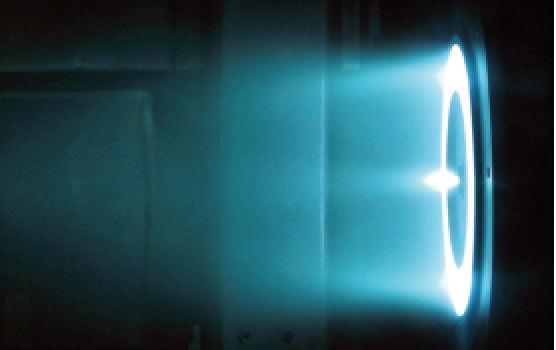
SPT140 xenon Halleffect thruster. Image is courtesy of Maxar.
Iodine introduces a number of advantages with regard to satellite integration. For example, since the propellant is unpressurized, the propulsion system can be safely delivered to a customer completely prefilled. Customers no longer need to separately organize the propellant to be delivered to their facility or launch site, and no specialized loading equipment or personnel are needed.
Using iodine, therefore, enables true turnkey solutions for on-orbit propulsion,and can streamline assembly processes, while significantly reducing indirect costs associated with the use of propulsion. Iodine also leads to a slight increase in thruster performance over similar xenon-fueled systems, due to a lower ionization potential which reduces power losses.
For the above reasons, research groups, space agencies (including NASA and ESA) and a number of companies around the world have been investigating and developing iodine propulsion over the last decade or so. One such company is ThrustMe, which spun out of a research lab at the Laboratoire de Physique des Plasmas at Ecole Polytechnique and the French National Centre for Scientific Research (CNRS) in 2017.
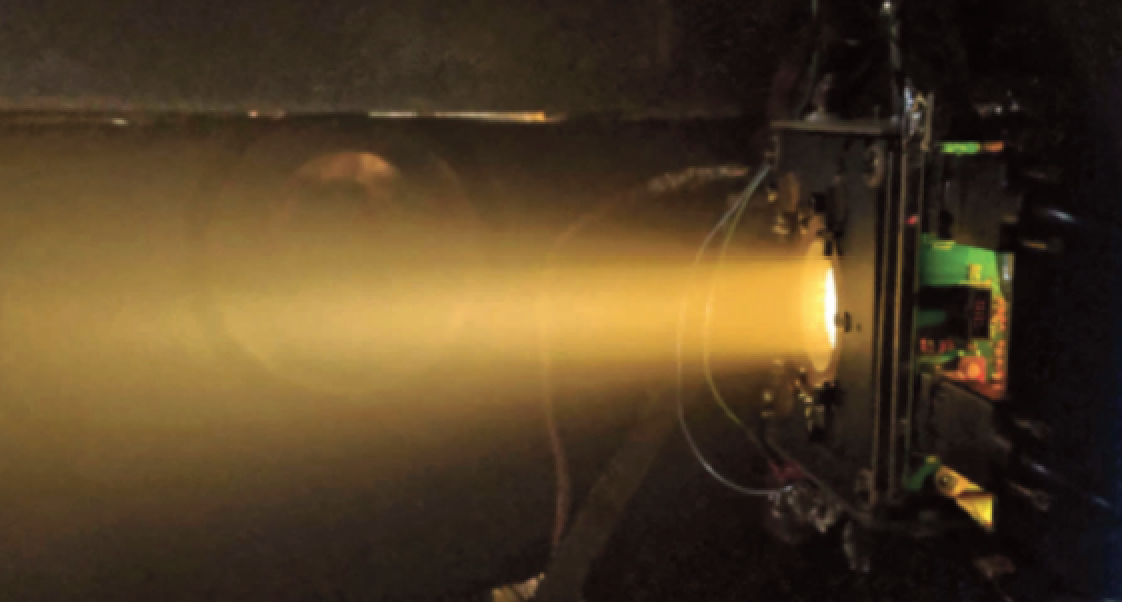
ThrustMe’s NPT30I2 propulsion system firing during tests in a space simulation chamber. Photo is courtesy of ThrustMe
ThrustMe is a French space company that offers a portfolio of turnkey propulsion products for a wide range of satellites and space missions, and has recently demonstrated how iodine can be exploited to its full potential.
In addition to the replacement of xenon with iodine, one of ThrustMe’s unique solutions is an integrated and pipe-less propellant delivery system. A heating element is used to cause sublimation of solid iodine propellant into gaseous form at very low vapor pressures.
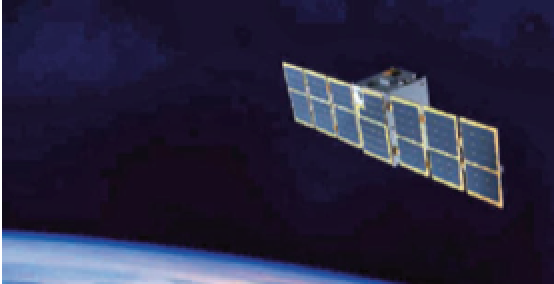
Artistic rendition of the Spacety Beihangkongshi1 satellite with
ThrustMe’s NPT30I2 propulsion system onboard.
Image is courtesy of Spacety.
This iodine vapor enters a special chamber in the thruster where a plasma is created. Ions from this plasma are then extracted and accelerated to generate thrust. By changing the temperature of the heating element, the sublimation rate can be controlled to allow operation in different thruster performance modes.
By combining solid iodine propellant with gridded ion thruster technology, ThrustMe is able to offer a complete, standalone, propulsion system, known as the NPT30-I2, that includes all components and subsystems necessary for its operation, such as the power processing unit, an intelligent operation controller, and iodine propellant storage and management. Customers only need to interact with a single vendor for the entire propulsion system, and it is delivered prefilled and ready to plug and play — a true turnkey solution.
First On-Orbit Demonstration
Although both NASA and ESA consider iodine as a key strategic propellant for the future, and in spite of iodine having been first proposed as an alternative propellant almost 20 years ago, until recently no iodine electric propulsion system had been launched or tested in space.
With funding support from ESA, the French National Space Agency (CNES) and the European Commission via the Horizon 2020 program, and in collaboration with the commercial space company Spacety Luxembourg and Spacety China, the world’s first iodine electric propulsion system was launched into space on the November 6, 2020. The ThrustMe NPT30-I2 propulsion system aboard the Beihangkongshi- 1 satellite was successfully test-fired multiple times between December 2020 and January 2021, with orbit changes confirmed both with NORAD tracking data and with a GPS receiver onboard the satellite. Orbit changes match closely with predictions based on propulsion system telemetry and numerical orbit propagation software, and show good consistency with the tracking data.
Economic and Environmental Sustainability
The successful launch and in-space operation of ThrustMe’s NPT30-I2 demonstrates for the first time that iodine is a viable alternative propellant for electric propulsion systems. This is an important milestone in the history of this technology, and is expected to accelerate its commercial adoption in the coming years.
For smaller satellites, such as cubesats, the NPT30-I2 represents an innovative new technology that completely eliminates the need for high-pressure propellant tanks and can allow more advanced maneuvers for ambitious small satellite constellations. This offers new opportunities for satellite operators to select more cost-effective launch vehicles and insertion orbits, as onboard propulsion can be used for final orbit placement and deployment. It also provides a means for collision avoidance and end-of-life disposal to satisfy space regulations and reduce the risk of collisions and debris generation — important factors for the long-term environmental sustainability of LEO.
For larger smallsats as well as large constellations, the benefit of iodine as a propellant for electric propulsion systems is clear. Having a propulsion system with a solid propellant that can be safely handled and delivered prefilled, and essentially directly integrated into a satellite without specialized equipment or personnel will help speed up satellite assembly, integration and testing, while reducing both direct and indirect costs associated with propulsion.
For constellations with many hundreds or thousands of satellites, having a fast turnaround time on the ground is critical for mission success, and having propulsion systems that use abundant and easy to obtain propellants will reduce supply disruptions. All of these factors combined will help to ensure the economic viability and sustainability of the industry.
https://www.thrustme.fr
Authors

Trevor Lafleur is a principal engineer at ThrustMe, a deep-tech company in the space industry that provides complete, stand-alone, propulsion systems for satellites.

Ane Aanesland is the Co-Founder and CEO of ThrustMe.

Laurene Richard is a Technical Sales Engineer at ThrustMe.

Dmytro Rafalskyi is the Co- Founder and CTO of ThrustMe.


